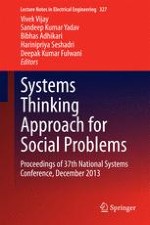2015 | OriginalPaper | Chapter
32. Development of Green Manufacturing System in Indian Apparel Industry
Authors : Ankur Saxena, A. K. Khare
Published in: Systems Thinking Approach for Social Problems
Publisher: Springer India
Activate our intelligent search to find suitable subject content or patents.
Select sections of text to find matching patents with Artificial Intelligence. powered by
Select sections of text to find additional relevant content using AI-assisted search. powered by
